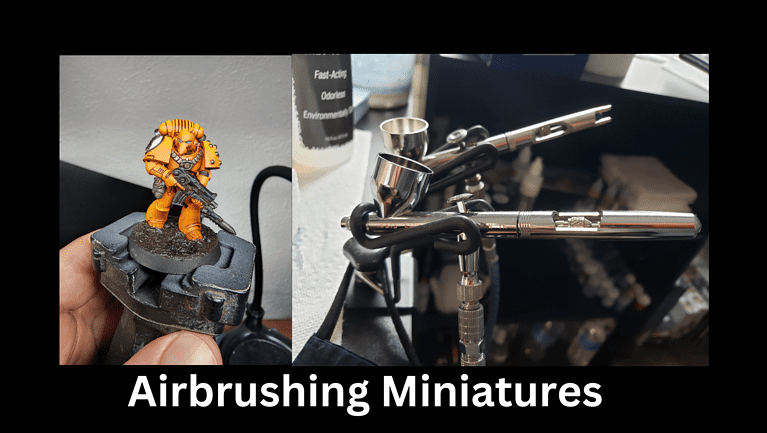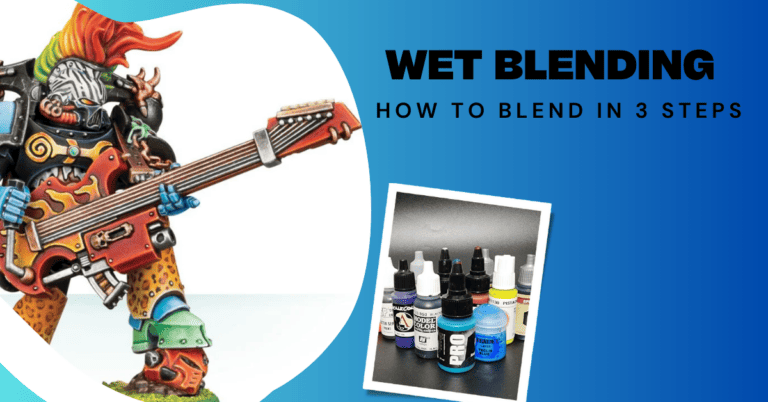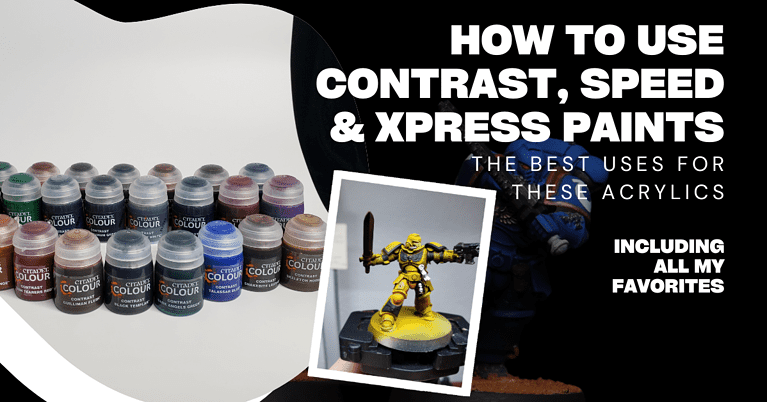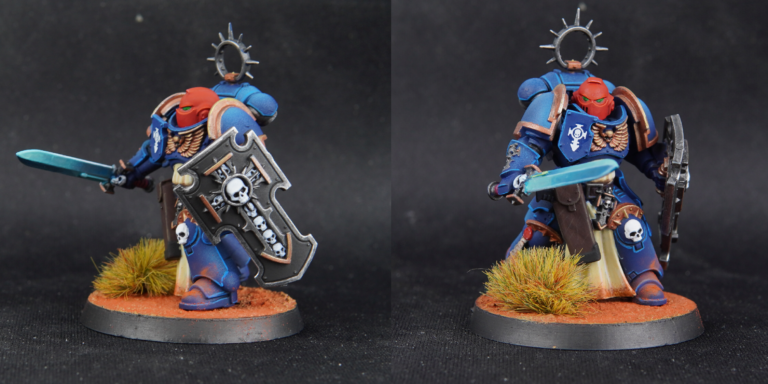What are Acrylic Paints: Properties, Pigments and Mediums 2023
Acrylic paints are hugely popular among artists and hobbyists like miniature painters. They are versatile, quick drying and have an enormous range of bright, vibrant colors. I wanted to go into what they are made of and how they differ from other paints like oils or enamels.
Knowing how they are made helps you understand what makes a high quality paint. From there you can appreciate what goes into the best paints for miniature painting, and what you’re giving up with cheaper paints.
It can also help with understanding what you’re doing when you thin paints down, or apply coats. So, on to the more scientific stuff.
Acrylic paints use a substance called an acrylic polymer emulsion, combined with pigments to add color. The acrylic polymer emulsion is simply a mix of water and acrylic, which normally separate, but undergo a process with emulsifiers to stay intact.
This acrylic polymer is used as a binder are used to keep the pigments in place after the paint dries. Pigments are simply the small granular material that gets suspended in the acrylic and gives the paint its color.
Pigments are typically made from various minerals and synthetic materials. Beyond just adding color, they have other properties such as opacity and lightfastness.
Opacity: For acrylic paints, opacity is how well the paint covers whatever is underneath it. High opacity will completely cover the layers underneath. Low opacity will allow the underlayers to still be visible.
Lightfastness: This is the resistance of the paint when exposed to light. How much it can take before fading in a bright light environment. We look for durable, lightfast paints for all our acrylics in art.
Finally, in addition to acrylic and pigments, acrylic paints can all have other additives that effect performance. Increase or reduced drying times, better paint flow, thicker or thinner consistency and more.
Acrylic Paint Components: Acrylic, Pigment, Binders, Additives
Pigments
Pigments are finely ground particles of material from natural or synthetic sources. Pigments can be organic, such as plant sourced, or inorganic, from mineral or metallic sources.
Obviously these colors can all be mixed to form variations and new colors.
Pigment size is very important. In many of my reviews on paints I’ll mention pigment size. When painting small models and miniatures, you’ll notice if the pigment particles are too large. It will give a speckled, pixilated look. This also becomes evident in cheaper craft paints.
Common pigments include:
- Red: Cadmium red, Quinacridone red, Quinacridone Magenta, Alizarin Crimson
- Yellow: Cadmium yellow, Hansa yellow, Yellow Ochre
- Green: Chromium oxide, Phthalocyanine green, Phthalo Green, Viridian Green
- Brown: Burnt Sienna, Raw Sienna, Raw Umber
- Blue: Cobalt blue, Ultramarine blue, Phthalo Blue
- Black: Carbon black, Mars black
- White: Titanium white, Zinc white
There are an enormous number of pigments available. Metallic, Fluorescent, and Interference pigments are all different compositions and can be used to make acrylic paints with unique properties and colors.
The pigments themselves will effect the opacity or transparency, lightfastness, and color mixing capabilities.
Acrylic Polymer Emulsion
The acrylic emulsion is what makes acrylics possible. It’s a milky mixture of water, acrylic polymer, and additives. This emulsion is the liquid that forms the paint and holds the pigments. Acrylic polymers are tiny plastic-like material. They get mixed with water, and when that water evaporates, the remaining acrylic forms a durable, water-resistant paint film that binds the pigments together and adheres them to the painting surface.
Binder
The acrylic binder holds the pigments together in the paint, and provides the paint’s adhesion, texture, and durability. The binder in acrylic paint is usually an acrylic resin or acrylic polymer, which contributes to the paint’s characteristic quick-drying and water-resistant properties.
Additives
Additives are common acrylic paint ingredients. They help round out the paints overall properties. Things like flow, consistency, finish and more. Here are some common additives :
- Stabilizers: Prevent pigment settling and improve paint consistency
- ICI Modifiers: Control the paint’s flow, making it thicker or thinner
- Defoamers: Reduce foaming during paint production and application
- Matting Agents: Give the paint a matte finish, reducing glossiness
That’s just some common examples. Obviously each brand and manufacturer will develop their own formulation. Typically, most paints within a range will have very similar qualities. If you are painting with acrylic you should try multiple brands to see which formulations you prefer.
Types of Acrylic Paints
Heavy Body Acrylics
Heavy body acrylics have a thick, smooth consistency that holds brushstrokes and is excellent for blending colors. These paints have a high pigment load, which makes them suitable for professional-grade and artist acrylics. The only heavy body acrylic I own is a titanium white. I don’t tend to use these much in miniature painting.
Fluid (Standard) Acrylics
These are what I tend to call standard acrylics. Thinner consistency but still high pigment load in these. Consistency varies but you can always thin them down further with water or medium. All the acrylics I use fall into either this category, inks, or contrast paints.
Acrylic Inks
Acrylic inks tend to be super high pigment to medium ratio. Meaning it’s very thin, water like consistency, but a ton of pigment in it. They flow very easily but be careful, they tend to dominate anything they touch. It’s not a subtle paint!
Interactive Acrylics
Interactive acrylics are a unique type of paint that allows artists to reactivate and manipulate the paint even after it has started to dry. This feature gives artists the ability to blend, glaze, and adjust the paint without losing the acrylic’s durability and vibrancy. Interactive acrylics combine the fast drying time of traditional acrylics with the workability of oil paints.
Craft Acrylics
Craft acrylics are versatile and cost-effective paints designed for use on various surfaces, including wood, glass, fabric, and ceramics. These paints typically have a lower pigment load and fewer additives than professional-grade acrylics, making them more affordable for craft projects and hobbyists. Exterior acrylics can be used for outdoor projects, providing UV resistance and durability in various weather conditions.
Painting Mediums and Additives
Gels and Modeling Pastes
Gels and modeling pastes are used to enhance the texture and thickness of acrylic paints. They can be mixed with acrylic colors to create a more substantial effect. Gels can range from soft to extra heavy. Modeling pastes provide additional texture by containing solid materials like marble dust or ceramic particles. These additives can also help to increase transparency and extend drying time.
Acrylic Mediums
Acrylic mediums are water-based acrylic additives that alter the paint’s properties. They can range from thinner mediums like flow improvers, which allow for a smoother application, to thicker mediums that provide structure and body to the paint. If you use acrylic paint, some common mediums include:
- Flow Aid: This reduces surface tension in paint. It allows for a much smoother flow from the paint belly, through the tip, and on to the surface you are painting.
- Gesso: A white, chalky medium used as a base layer to prepare surfaces for painting. It provides a consistent and durable surface for the acrylic paint to adhere to.
- Water: The most common medium is water. Used regularly to thin the paint, which are themselves water based.
- Drying Retarders: A medium that slows down the drying time of acrylics, providing artists with more working time before the layer of paint sets.
Varnishes and Sealants
Varnishes and sealants protect your paint after it is applied and the paint has dried. They create a clear coat that helps protect against dust, dirt, and moisture. They can also help to maintain the vibrancy of colors and reduce the effects of ultraviolet light.
Finally, varnishes are often used as a “save point” on miniatures and models. You can varnish it and if you make a mistake, simply remove the paint and go back to that previous point.
Some examples include
- Solvent-Based Varnishes: These varnishes use solvents like mineral spirits or turpentine to dissolve the acrylic resin, creating a durable and waterproof protective layer.
- Water-Based Varnishes: These are my preferred varnishes. They are non toxic, water-based varnishes and offer similar protection while being easier to clean up.
- Isolation Coat: I have not used these personally, but it’s a transparent layer applied between the painting and the varnish. It makes it easier to remove and reapply varnish if it gets discolored over time.
.
Properties of Acrylic Paints
Acrylic paints are a popular for their properties and cost. They are versatile, have a fast drying time, and are water-resistant. You can alter the properties to suit your needs.
Drying Time
One of the most significant advantages of acrylic paints is their fast drying time. They can dry in as little as 15 minutes, making them an excellent choice for artists who want to work quickly. However, this quick-drying property can also be a disadvantage for artists who prefer to blend or work wet-on-wet. By contrast, oil paints can take more than 8 hours to dry.
Opacity and Transparency
Acrylic paints can be either opaque or transparent, depending on the pigment used. They can be thinned with water or acrylic mediums to create a range of transparencies and glazes. That ability is part of what I mean when I say they are versatile.
Affordability
Acrylic paints are generally more affordable than oil paints, which is one reason they are popular. They also require less equipment and can be cleaned up with soap and water. Oil paints require heavy solvents that are more toxic, can have fumes, and are generally harder to work with and clean up.
Flexibility and Adhesion
Acrylic paints are known for their flexibility and adhesion properties. They can be used on a variety of surfaces, including porous and non-porous materials. They can also be mixed with a variety of mediums and additives to create different textures and effects.
I hope you found this article helpful. As always, post any questions below.






